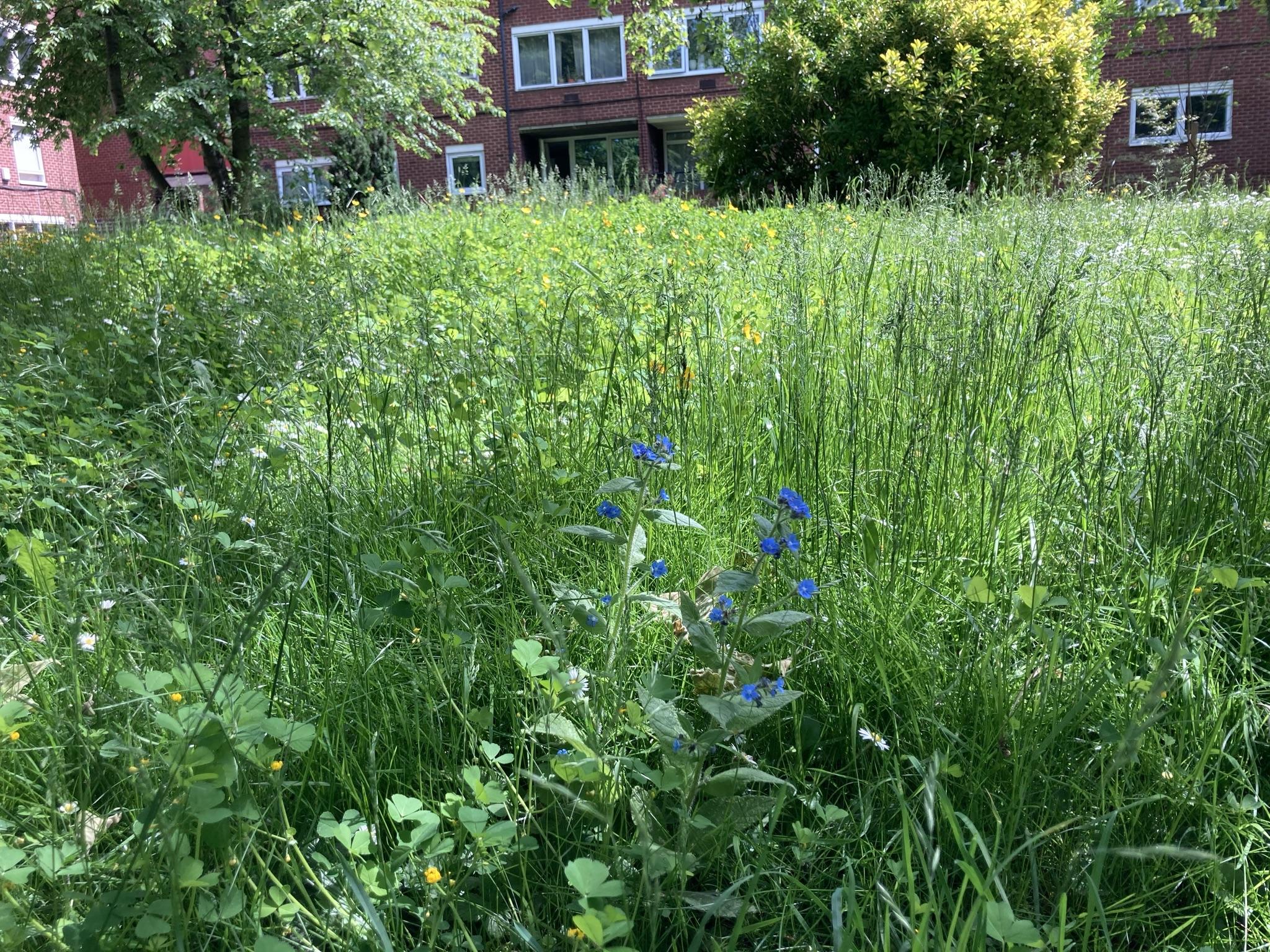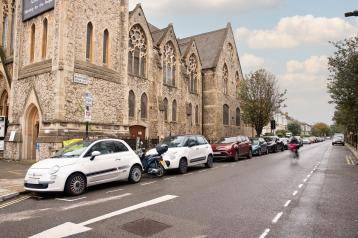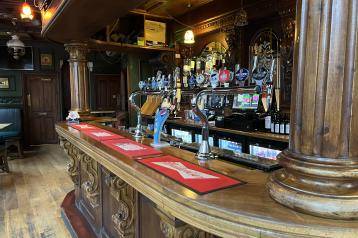
Grass allowed to grow wild – No Mow May is returning to Hammersmith & Fulham for the second year running!
It's time to give our mowers – and nature – a break.

Following last year's successful No Mow May campaign, it's returning to help create more green spaces for bees, plants and insects across Hammersmith & Fulham.
For the second year running, we've asked our contractors to refrain from mowing parks, gardens and road verges for the whole month of May. And this year, it will also include open spaces on various local council estates.
Whether you decide to let your lawn grow or participate in our photo competition – please join us in going wild for No Mow May!
Climate Action Together
50 year old Francois Jordaan – Hammersmith resident and Tenants and Residents Association (TRA) Secretary for the Bayonne Estate in Fulham – has been working to improve the environment around the estate for many years.
"No Mow May inspired me to take further action," he said. "When I first learned about it in 2021, I asked H&F if we could leave the entire lawn on the estate unmowed for the summer as a wildflower area."

He continued to explain: "A mowed lawn does very little for biodiversity. It means fewer flowers for pollinators like bees and butterflies to visit, few food plants for caterpillars, and no habitat for spiders and other insects to live.
"An unmowed meadow quickly accumulates dozens of plant species that provide food and habitat for a large variety of insects. That in turn benefits birds."
Watch Francois appearance in our Climate Action Together video.
Help bee-friendly birds and insects – win a £50 voucher!
Throughout the month of May, we're once again encouraging H&F residents to take part in our No Mow May photo competition.
The top four photos will win a £50 gift certificate to the W6 Garden Centre in Ravenscourt Park, Hammersmith.

Show off how YOUR community is making an impact for bees and other pollinators as we build the greenest borough in the UK.
Do you have a lawn or green space at home? Send us pictures of your new wild areas.
No lawn? No problem. Show us how biodiversity is blooming in your area as No Mow May is rolled out to our parks, verges and estates this year!
Please submit your pictures to press.office@lbhf.gov.uk by Tuesday 31 May 2022. Usual rules apply.

Participating estates
Participating housing sites will leave dedicated pockets of amenity grassed areas uncut to further encourage the ecosystems, including:
SW6
- Bulow Estate
- Clem Attlee Estate
- Lancaster Court
- Robert Owen House
- Sulivan Court
W6
- Bayonne Estate
- Flora Gardens
- Margravine Estate
- Queen Caroline Estate
- Underwood House
W12
- Askham Gardens
- Batman Close
- Becklow Gardens
- Edward Woods Estate (W11)
- Emlyn Gardens
- White City Estate
W14
- Lytton Estate
- Springvale Estate
- West Kensington Estate

Make space for nature
No Mow May is only one of the steps we're taking to restore and enhance nature as outlined in our chart-topping Climate and Ecology Strategy.
A quick and easy way to boost biodiversity, it gives common short-grass flowering species a chance to flower, and can boost nectar production for bees and pollinators by 10 times.
Francois explained: "A city is a challenging environment for plants, insects, birds, and wild animals, so it's important to make an effort to create more green spaces for plants and insects.
"Many native British species are threatened by development. Parks, and especially semi-wild areas with a variety of plant species and shelter, can make a significant difference in their survival. They also benefit us humans: in air quality, in educational value, and simply the beauty of nature."
Over the past 10 years, H&F has:
- planted two kilometres of wildlife hedges – enough to line the entire section of the A4 road in H&F
- established 26 hectares of wildflower meadows, making space for hedgehogs, bees and birds – approximately 10 per cent of our open spaces dedicated to our local ecology and biodiversity
- become the first London borough to plant a Tiny Forest – a dense, fast-growing woodland the size of a tennis court featuring 600 trees and shrubs planted to benefit wildlife – with a second already thriving in Normand Park.
Want to learn more about our H&F's local wildlife and how you can help it thrive?
Save the date for our Wild for Wildlife festival, coming to Wormholt Park and Bishops Park on Saturday 2 and Sunday 3 July.
If you would like to be a part of this event please email climate-emergency@lbhf.gov.uk
Want to read more news stories like this? Subscribe to Climate Connects.




